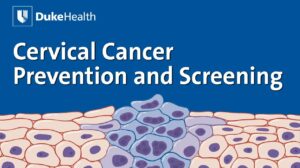NEW YORK (Reuters Health) – Patients with esophageal cancer appear to have equally good survival after minimally invasive esophagectomy (MIE) or traditional open surgery, according to a new meta-analysis from Australia.
“MIE should no longer be ignored as a viable technique and clearly has some benefits,” senior author Dr. Guy D. Eslick told Reuters Health by email.
In the past, researchers have raised concerns about the safety and oncologic results of MIE, particularly regarding the adequacy of lymph node removal and cancer recurrence. In the new study from Dr. Eslick and colleagues at the University of Sydney, survival rates at one, two, three and five years were no different for the two approaches.
But Dr. Andrew Chang, a surgeon at the University of Michigan who wasn’t involved in the Australian study, said the studies in the meta-analysis were too heterogeneous. “Consequently, the conclusions…might not be valid and should not be taken as strong evidence in support of one approach vs. another,” Dr. Chang told Reuters Health.
He added, “Those who feel that MIE is a better operation will continue to do so, and those who do not will find no compelling evidence that argues for MIE.”
As reported this month in Archives of Surgery, the 16 case-control studies in the meta-analysis included 1,212 patients, 494 of whom (40.8%) had minimally invasive surgery. Three-quarters of the open procedures used a trans-thoracic approach; the others were trans-hiatal.
The MIE procedures varied from trans-thoracic thoracoscopic plus laparoscopic, to hand-assisted trans-hiatal or inversion esophagectomy or a hybrid operation in which the abdominal portion was done as an open laparotomy.
The types of neoplasms — squamous cell carcinoma, adenocarcinoma and high-grade dysplasia or carcinoma in situ — were similar in both the minimally invasive and open groups.
Ten lymph nodes were excised in each open case, on average, and 16 in the MIE cases (p=0.02). Dr. Eslick speculates that more nodes may be retrieved during MIE due to the nature of the dissection and the effect of magnification and improved vision — or the enthusiasm of the surgeons. He cited another factor as well: “The pathologist plays a major role in the detection of lymph nodes and some pathologists may after finding several nodes look no further, whereas others are more diligent and go over the specimen several times.”
But Dr. Chang is bothered by the inconsistencies in the number of lymph nodes removed. In the MIE groups in the various studies, the number ranged from seven to 34; in the open surgery groups, the range was from three to 33. “Given this,” he said, “I question the validity of an across-group meta-analysis, particularly since the group which reported the strongest effect of lymph node counts had the lowest node retrieval.”
Tumor stages were similar in the two groups, but significantly more MIE patients received neoadjuvant chemotherapy (p<0.001). Here again, Dr. Chang had reservations, as did his colleague Dr. Jules Lin. The two primarily perform open trans-hiatal esophagectomy and a cervical esophagoenteric anastomosis without the need for thoracotomy. They have done MIE via hybrid hand-assisted laparoscopy for selected patients. Both surgeons told Reuters Health they were surprised that more patients received neoadjuvant therapy in the MIE group. At Michigan, they said, only patients with superficial tumors not treated neoadjuvant therapy are considered for a hand-assisted laparoscopic approach. "You can never rule out the possibility that the neoadjuvant chemotherapy had a greater effect on the MIE group compared to the open group and this obviously has to be considered as a potential confounding factor," Dr. Eslick acknowledged. Only two studies reported 30-day survival, with no significant differences. Operative duration and hospital lengths of stay also did not differ. Dr. Lin commended the authors on their effort. Still, he asked, "Can one draw any conclusions when the MIE group includes thoracoscopic/laparoscopic, hand-assisted laparoscopic, inversion laparoscopic, and hybrid procedures or when the open group includes trans-hiatal esophagectomies without a thoracotomy along with patients undergoing an open right thoracotomy?" Study co-author Dr. Michael R. Cox said the group is not yet performing MIE but based on the findings of their meta-analysis, they have sent a surgeon to Korea to learn the technique. They expect to begin offering MIE to their patients in 2014. Dr. Lin urges caution. "Further studies need to be performed using well-defined groups to determine if there is a significant difference between the two approaches," he said. He added that along with oncologic outcomes, meaningful conclusions must consider anastomotic leaks, stricture rates, nerve injuries, pulmonary and cardiac events as well as quality of life and the ability to eat. SOURCE: Evidence to Support the Use of Minimally Invasive Esophagectomy for Esophageal Cancer




